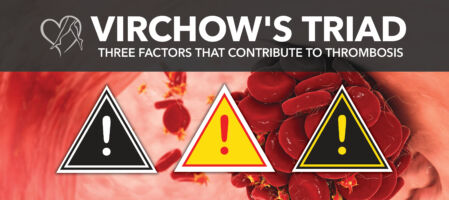
Thrombosis is a blood clot in a vessel condition that can form in a vein or artery. It is a severe medical condition that can lead to life-threatening complications. Thrombosis is dangerous because it can obstruct blood flow, depriving tissues of necessary oxygen and nutrients. This can lead to severe health issues such as pain, swelling, or tissue damage. Deep vein thrombosis (DVT) is a type of thrombosis occurring in the body’s deep veins.
If a blood clot breaks loose, it can travel to vital organs. For example, a clot that travels to the lungs can cause a pulmonary embolism (PE), a life-threatening condition that impairs lung function and can lead to sudden death. Thrombosis in arteries can also cause heart attacks or strokes if it blocks blood flow to the heart or brain. Understanding why these clots form is critical to preventing and managing them, especially if you have vein disease or other risk factors.
With such serious medical consequences that can result from blood clots, how can an individual identify and manage the risk factors that contribute to deep vein thrombosis (DVT)?
Virchow's Triad is named after the 19th-century physician Rudolf Virchow. According to the National Library of Medicine (NIH), Virchow was born in Pomeranian Prussia in 1821. By age 24, he became a “company surgeon,” advocating for a mechanistic, research-based approach to medicine through clinical observation, animal experimentation, and necropsy. His influential work, including the publication of Archives for Pathological Anatomy and Physiology and Clinical Medicine in 1847, laid the foundation for understanding embolization (a minimally invasive procedure that blocks or closes a specific blood vessel) and venous thrombosis.
Virchow’s work helps explain the three main categories that contribute to thrombosis: blood flow issues, vessel wall damage, and blood's ability to clot. Let’s break down these categories and see how they relate to common vein problems like varicose veins and venous insufficiency.
One major part of Virchow’s Triad is blood flow stasis, which means blood isn’t moving as efficiently as it should. When blood pools or slows down, it increases the chances of clot formation. This can happen in conditions where the veins struggle to pump blood effectively back to the heart, such as:
People who experience long periods of inactivity, such as sitting during long flights or being bedridden after surgery, are also at higher risk for stasis-related thrombosis. Staying active, taking short walks, and doing exercises that promote circulation can help prevent varicose veins and related issues.
At Center for Vein Restoration (CVR), our board-certified vein specialists are dedicated to improving your vein health using state-of-the-art, minimally invasive treatments for issues like varicose veins, spider veins, and venous insufficiency. Let us improve your blood flow to reduce the risk of blood clots and help relieve symptoms like leg pain, swelling, and unsightly varicose veins.
To schedule a consultation, call 240-965-3915 to speak to a Patient Services Representative or schedule your consultation online at a CVR near you today.

The second part of Virchow's Triad refers to damage to the inner lining of the vein, known as the endothelium. This damage can trigger blood clots as a natural response to repair the injured area. While this is necessary for healing, excessive or recurrent clotting can become problematic. Causes of endothelial damage include:
The final part of Virchow’s Triad involves hypercoagulability, which refers to an increased tendency for the blood to clot. While blood clotting is vital for healing cuts or injuries, some people have conditions that make their blood clot too easily. Factors that can contribute to hypercoagulability include:
According to ScienceDirect, hypercoagulability is also linked to vein problems that increase your risk of venous thrombosis. For instance, people with varicose veins and chronic venous insufficiency often have a higher risk of developing clots because of a combination of poor circulation and other risk factors.
People dealing with venous issues often see a vein specialist or vein doctor to manage symptoms and prevent complications. If you're experiencing leg pain or swelling or have visible vein problems like varicose veins or spider veins, it’s important to consult a qualified vein expert. They can recommend treatments that improve blood flow and reduce the risk of clot formation. These might include minimally invasive procedures such as sclerotherapy, radiofrequency ablation, or endovenous laser treatment.
If you're concerned about developing varicose veins or worsening existing vein problems, there are several preventive measures you can take:
As America’s Largest Physician-Led Vein Center, you can trust the vein experts at Center for Vein Restoration. With a team of experienced vein specialists and state-of-the-art treatment options, CVR provides personalized care to help you achieve healthier, pain-free legs—all in the comfort of an office-based setting.
Schedule your consultation today and take the first step toward lasting relief!
